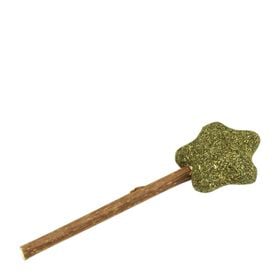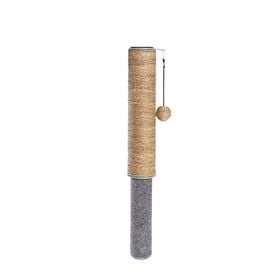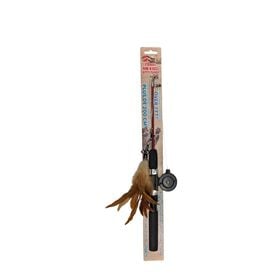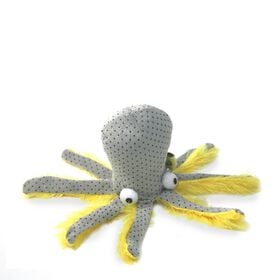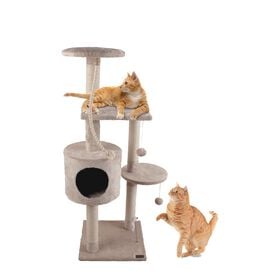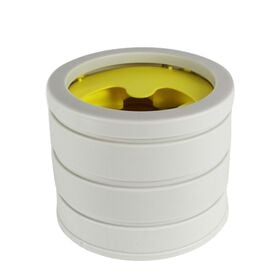Cats are equipped with several effective weapons of mass destruction that they can direct toward your sofa, wires, chair spindles and door frames. Whether they use their claws or their teeth, about 25% of cats exhibit this type of behaviour, which can be very unpleasant for owners and sometimes dangerous for the cats themselves. There are simple solutions for preventing and even correcting these behaviours. Let’s take a closer look.

Is your cat healthy?
The first thing to do is to be sure that your cat doesn’t have a medical problem that could trigger this type of behaviour. You might be surprised to know that 85% of cats over age 3 have dental problems that can be painful and cause them to chew on or bite objects. A visit to the veterinarian is therefore a top priority.
It’s also important to determine whether or not your cat ingests what it’s chewing on. Ingesting non-food substances is a phenomenon known as pica. This medical condition is often related to the digestive system. You should never improvise a solution. Instead, see your veterinarian, who can refer you to an internal medicine specialist. Although this is not a serious condition per se, ingesting a variety of objects can lead to dire consequences. The disorder often results in intestinal blockages, which cause cats to stop eating. Humans can spend several days, even weeks, without eating. Cats, however, can die from severe complications if they do not eat for more than two or three days.
How do you ensure their safety?
Once you’ve ruled out any medical problems, you should immediately consider the cat’s safety, since solutions to this type of behavioural problem will take some time to implement. A cat that chews on electrical wires, for example, is at risk of being electrocuted. You should therefore protect the wires that your cat is attracted to with rubber or plastic sheaths, which you’ll find in most electronics or office supply stores.
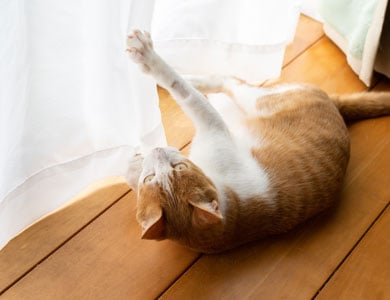
Why do cats behave this way?
Let’s start with what motivates a cat to adopt this type of behaviour. The three main reasons are as follows:
Lack of stimulation
If a cat lives in an environment that’s not stimulating enough, it may adopt destructive behaviour. That’s easy to understand. If a cat doesn’t have enough activities to keep busy, it can very creatively come up with things to do, such as biting and chewing on objects. These behaviours become activities like any other to help pass the time.
Chewing need
This can be the reason why a cat chews on wires. Like dogs, which are often given bones to satisfy their chewing need, cats can also have a similar need. Although it is usually satisfied by simply chewing their food, some cats have greater needs, which lead them to chew on objects
The need to sharpen their claws
Cats do this to keep their claws ready for action, and to stretch their spine so that it maintains its elasticity. Note that, contrary to popular belief, scratching is not used as a way of marking territory. Solutions for this type of destructive behaviour are dealt with in detail in this article.
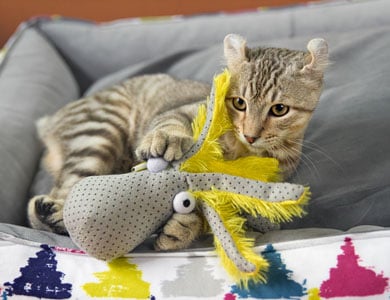
How can you enhance their surroundings?
A stimulating environment is the best way to keep your cat from destroying your surroundings. If you read our articles on a regular basis, you probably realize that a stimulating environment is the key to preventing many behavioural problems, and that it’s important to provide cats with interactive bowls, toys and climbing trees. It’s also vital to play with your cat twice a day to occupy its time with constructive activities instead of giving the cat an opportunity to devise its own activities, such as chewing on wires.
A scratching post can be very effective if placed in the right location. Even if a cat often prefers having its scratching post near its resting spot (which is why a number of cat trees also combine scratching posts), the best place for a scratching post is where the cat already sharpens its claws. That’s why placing a scratching post at the back of a room because it doesn’t blend well with the decor is counter-productive, since that’s not where the cat sharpens its claws. You end up with a cat that attacks the corner of your sofa because the piece of furniture meets all the above-mentioned criteria. Cats also target door frames for the same reasons.
If your cat continues to misbehave despite having a stimulating environment, you can always seek out the advice of an Educator, who can easily help find solutions. Unfortunately, these solutions cannot be explained here because they need to be tailored to your specific situation and your pet. Chewing on wires is often a behaviour that requires the advice of a specialist, but that can be easily remedied using simple techniques that encourage your pet to focus on a controlled alternative and abandon the areas in the house that you want it to stop destroying.


